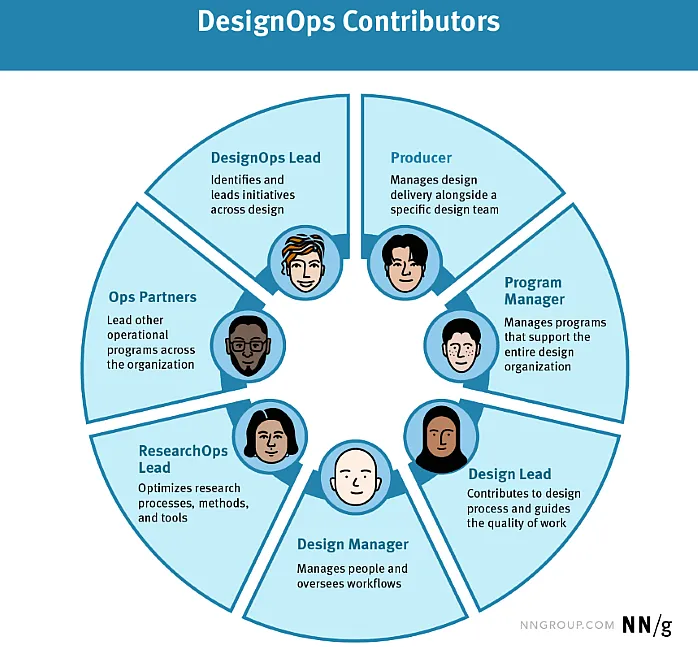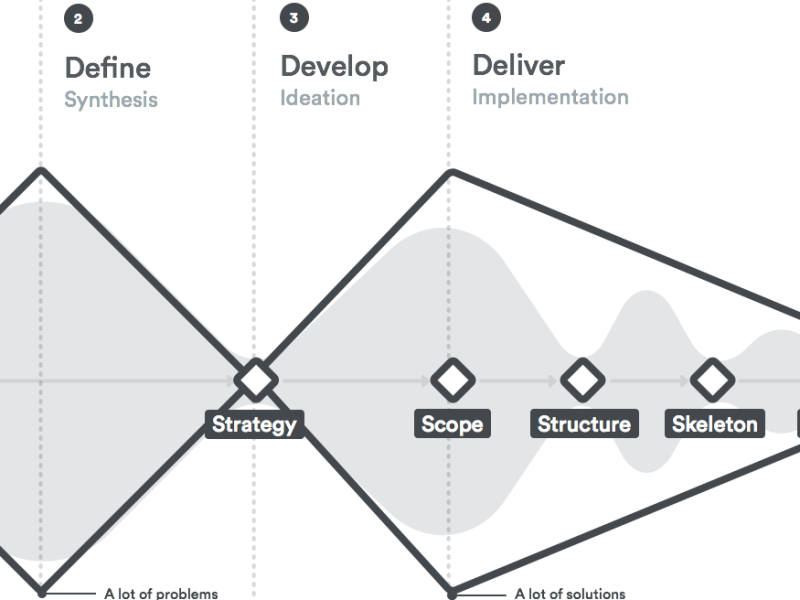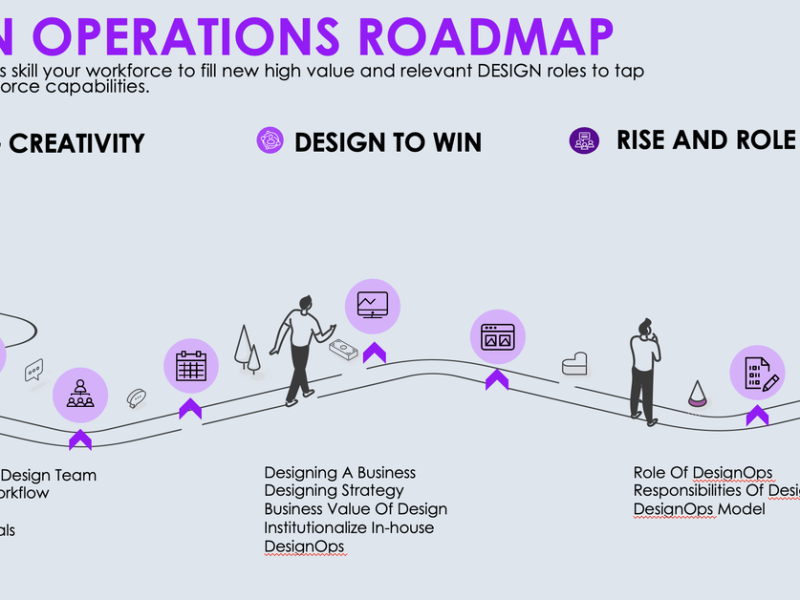Driving Operational Excellence in Design with DesignOps
The rapid pace of digital transformation has propelled organizations to place greater emphasis on design as a strategic lever for innovation and customer satisfaction.
Yet, scaling design efforts across teams, tools, and workflows remains a formidable challenge. This is where DesignOps (Design Operations) emerges as a critical discipline, providing the scaffolding for designers to focus on what they do best: creating impactful experiences.
At the heart of DesignOps success is a framework with clearly defined roles that ensure seamless collaboration and operational efficiency.
Let’s dive deeper into these pivotal roles and their contributions to a thriving DesignOps ecosystem.
1. DesignOps Manager: The Operational Visionary
The DesignOps Manager acts as the linchpin of the framework, responsible for driving efficiency and fostering a culture of continuous improvement. This role encompasses:
- Streamlining Processes: Identifying bottlenecks and implementing workflows to enhance team productivity.
- Resource Allocation: Ensuring that designers have access to the tools, budgets, and training needed to succeed.
- Metrics and Reporting: Establishing KPIs to measure the impact of design efforts on business outcomes.
Example: At Airbnb, the DesignOps team played a key role in scaling their design system—ensuring consistency across global teams while reducing duplication of effort. Their success was attributed to robust process management and strategic resource deployment.
2. DesignOps Leads: Guardians of Creative Excellence
Design Leads bridge the gap between strategy and execution. They oversee the creative output of their teams and maintain high-quality standards. Key responsibilities include:
- Setting Creative Vision: Aligning design efforts with the company’s brand identity and strategic goals.
- Mentorship: Supporting junior designers through constructive feedback and skill development.
- Quality Assurance: Conducting design reviews to uphold consistency and usability.
Example: In the revamp of Slack’s user interface, Design Leads ensured that the updates resonated with their user base while adhering to accessibility and usability principles.
3. Project Managers: Orchestrators of Timelines and Budgets
Project Managers (PMs) are crucial for translating big-picture goals into actionable plans. They enable design teams to deliver on time and within budget by:
- Timeline Management: Setting realistic deadlines and monitoring progress.
- Budget Oversight: Allocating resources effectively to avoid cost overruns.
- Cross-Functional Collaboration: Coordinating with product managers, engineers, and other stakeholders to ensure alignment.
Example: In a case study by IDEO, their PMs played a pivotal role in synchronizing efforts between their design and engineering teams to deliver a healthcare app that improved patient outcomes.
4. Stakeholders: Aligning Design with Business Objectives
Stakeholders—ranging from executives to product managers—ensure that design initiatives align with overarching business goals. Their involvement includes:
- Strategic Input: Providing context on market needs and business priorities.
- Decision-Making: Approving design directions and allocating budgets.
- Feedback Loops: Offering insights to refine prototypes and final deliverables.
Example: At Google, stakeholder collaboration was instrumental in evolving Material Design into a widely adopted framework, balancing business objectives with user needs.
5. DesignOps Designers: The Creative Core
Designers bring visions to life. Their role goes beyond crafting visuals to actively shaping the user experience. Core contributions include:
- Execution of Creative Tasks: Producing wireframes, prototypes, and final assets.
- Strategic Involvement: Participating in design sprints and providing insights on user-centric solutions.
- Collaboration: Working closely with developers to ensure designs are implemented as intended.
Example: The redesign of Spotify’s mobile app showcases how designers—working closely with developers and stakeholders—crafted an intuitive interface that enhanced user engagement.
Final Thoughts
A well-structured DesignOps framework with clearly defined roles is essential for scaling design efforts and achieving organizational goals. By fostering collaboration, optimizing workflows, and aligning design with business strategy, companies can unlock the full potential of their design teams.
References and Further Reading
- DesignOps Handbook by InVision
- Airbnb DesignOps Case Study
- Slack’s Redesign Journey
- IDEO’s Approach to Cross-Functional Collaboration
- Google Material Design
- Spotify Case Study
By focusing on these roles and fostering collaboration, companies can not only improve their design outcomes but also strengthen their competitive edge in an increasingly user-centric world.


